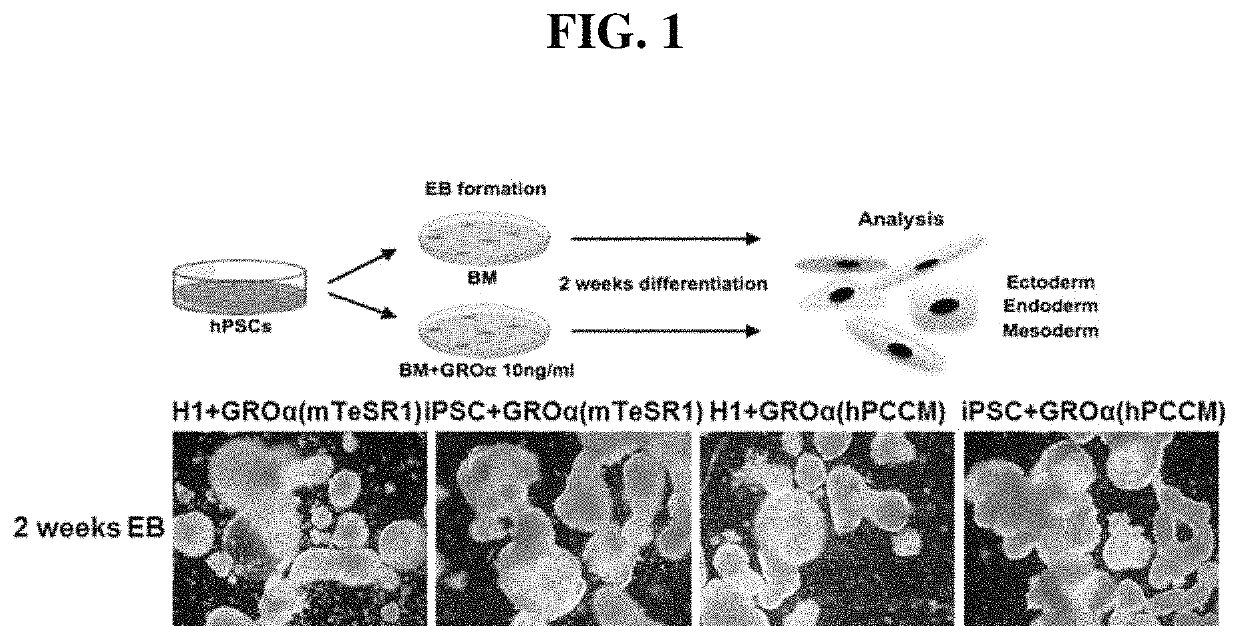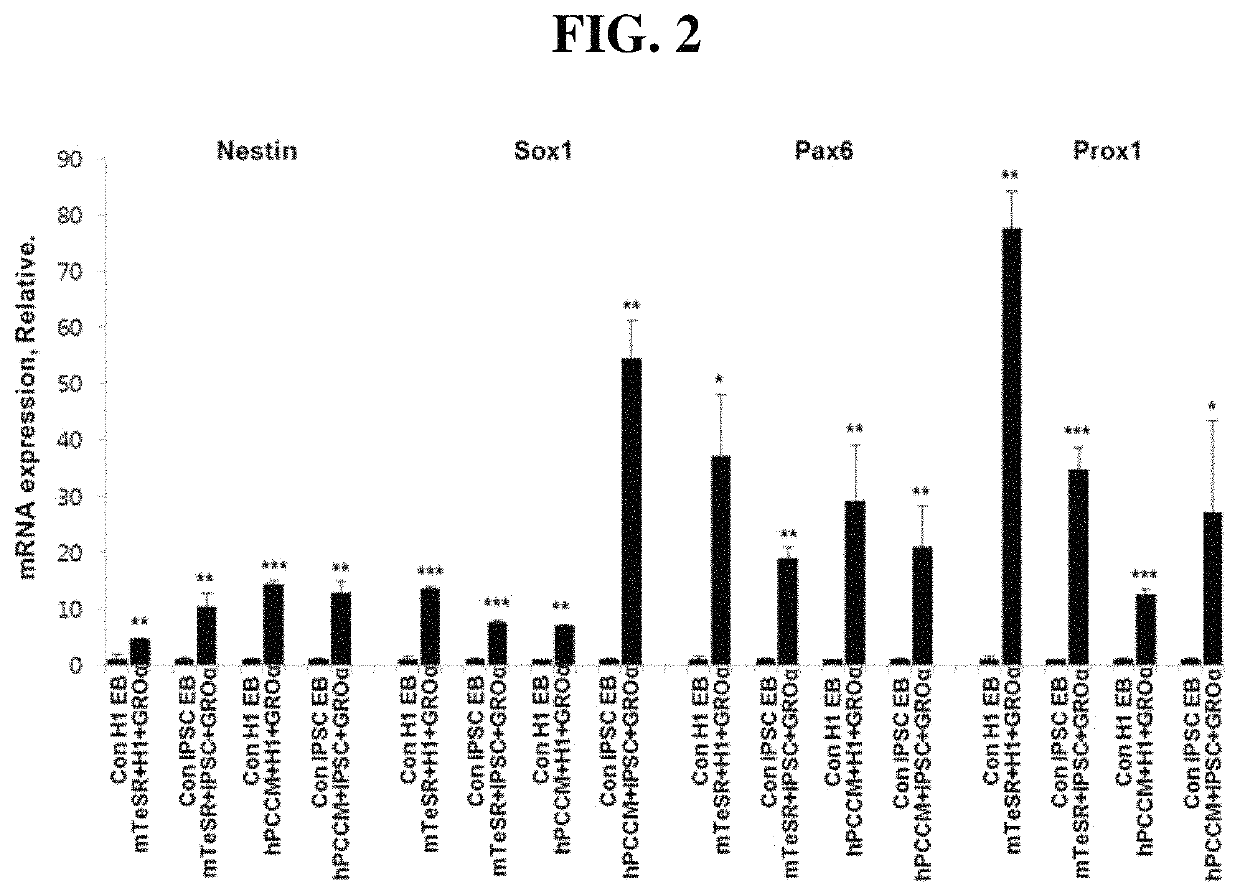Method for inducing ectodermal differentiation of embryoid bodies derived from human pluripotent stem cells by CXCR2 stimulation
a human pluripotent stem cell and embryoid body technology, applied in the field of inducing ectodermal differentiation of embryoid bodies derived from human pluripotent stem cells by cxcr2 stimulation, can solve the problems of insufficient cell receptor control, low efficiency of stem cell differentiation, and high cost of methods, so as to promote stem cell differentiation and improve stem cell efficiency and utility.
- Summary
- Abstract
- Description
- Claims
- Application Information
AI Technical Summary
Benefits of technology
Problems solved by technology
Method used
Image
Examples
example 1
Induction of Differentiation of Human Pluripotent Stem Cells into Ectoderm
[0033]Human pluripotent stem cells are able to differentiate into all types of human cells, and a step of forming embryoid bodies for a specific period of time and determining differentiation into three-germ-layer cells by the stimulation and activation of each of receptors should be performed to induce cell differentiation. However, a significant portion about the induction of lineage-specific differentiation is still required to be developed.
[0034]In this Example, in order to induce ectodermal differentiation, human pluripotent stem cells (hPSCs) purchased from WiCell (http: / / www.wicell.org / ) were cultured to form embryoid bodies in a low-attachment 6-well culture dish (Corning, USA) in a floating state, and then differentiation of the embryoid bodies was induced. For induction of differentiation, the CXCR2-specific ligand GRO-a (human recombinant GROα, R&D Systems) was added continuously over 2 weeks at a l...
example 2
Analysis of Differentiation into Ectoderm by Real-Time Polymerase Chain Reaction
[0037]After the induction of differentiation into ectoderm, changes in the expression of Nestin, Sox1, Pax6 and Prox1 genes that are ectoderm-specific expression markers were analyzed by real-time polymerase chain reaction.
[0038]Specifically, RNAs were isolated from differentiation-induced cells using a Qiagen RNeasy kit (Qiagen Hilden, Germany), and cDNAs were synthesized using 2 μg of each RNA, oligo (dT) and Superscript II reverse transcriptase (Gibco). Target gene primers and an iQ SYBR Green qPCR Master Mix were added to each of the synthesized cDNAs, and analysis was performed using a Bio-Rad iCycler iQ system (Bio-Rad Laboratories, USA). The results were normalized using the GAPDH gene, and P values were used to determine statistical significance (*P<0.05, **P<0.01, and ***P<0.001).
[0039]Primers used to analyze the expression of ectodermal, endodermal and mesodermal genes are as follows:
[0040](1) ...
PUM
| Property | Measurement | Unit |
|---|---|---|
| concentration | aaaaa | aaaaa |
| concentration | aaaaa | aaaaa |
| differentiation induction time | aaaaa | aaaaa |
Abstract
Description
Claims
Application Information
 Login to View More
Login to View More - R&D
- Intellectual Property
- Life Sciences
- Materials
- Tech Scout
- Unparalleled Data Quality
- Higher Quality Content
- 60% Fewer Hallucinations
Browse by: Latest US Patents, China's latest patents, Technical Efficacy Thesaurus, Application Domain, Technology Topic, Popular Technical Reports.
© 2025 PatSnap. All rights reserved.Legal|Privacy policy|Modern Slavery Act Transparency Statement|Sitemap|About US| Contact US: help@patsnap.com



